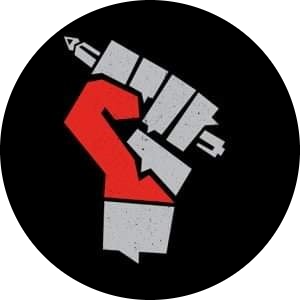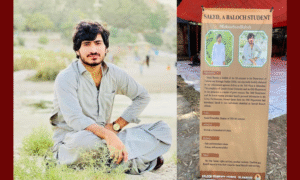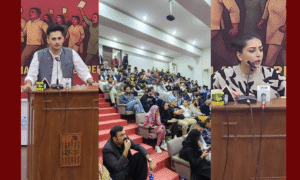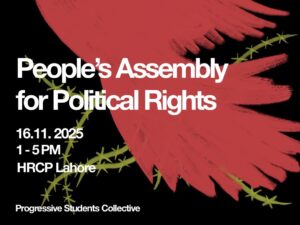Judicial activism refers to the exercise of judicial review power to invalidate government actions. The term is commonly used to describe instances of this power being used in a manner considered undesirable, although there is little consensus on which specific instances fall into this category. It is a broad term that encompasses the process of judicial review, which grants superior courts the authority to adjudicate the constitutionality of laws or actions undertaken by the legislative and executive branches of a state. Currently, there is a significant interplay between judicial activism and the legislative and executive branches, resulting in a constant power struggle.
Superior courts worldwide exercise judicial power to address ineffective extrajudicial and constitutional actions taken by the administrative and legislative branches. The Supreme Court of Pakistan, like other supreme courts around the world, actively engages in wielding this power. Although the interference of institutions and the manipulation of the separation of powers in Pakistan is not a recent development, it can be traced back to the Molvi Tameez U Din case in 1953 (PLD 1955 FC 240). This case stands as an example of political rights being infringed upon due to institutional interference in the affairs of the state of Pakistan.
History presents several examples of judicial activism, many of which involve undemocratic judicial interferences leading to the dissolution of assemblies and the concentration of parliamentary power in the hands of a single Supreme Court judge. These instances of judicial interference, often in collaboration with the military establishment, can be seen as undermining the fundamental principle of the separation of powers, known as the Trias Politica.
In the context of third world countries, particularly in South Asian states such as India and Pakistan, there are notable cases that exemplify this trend. One such case is the Indira Gandhi Case in 1973 where her candidacy form was rejected by the Allahabad court in the State of Uttar Pradesh VS Raj Narain. Furthermore, other examples include the Begum Nusrat Bhutto case (Begum Nusrat Bhutto VS Chief of Army Staff 1977 SC 657) and the Asima Jillani case (Asima Jillani VS Government of Punjab PLD 1969 LHR 786). These judgments have significantly undermined democratic values and contributed to the destabilization of democracy.
The failures of the legislative branch have allowed the judicial tradition, specifically the Supreme Court of Pakistan, to encroach upon political matters. This trend of judicial activism has led to an imbalance in the democratic system by overriding the authority of the legislature and executive branches. Consequently, the line of democracy in Pakistan is being harmed by the excessive intervention of the judiciary.
The Dual Phases of Judicial Activism in Pakistan: Upholding Rule of Law but at a Cost:
In Pakistan, judicial activism has manifested in two distinct phases. The first phase involves the judiciary intervening in government affairs to ensure the application of the rule of law. The second phase focuses on safeguarding the constitutional fundamental rights of citizens, often when other institutions have failed to do so. One prominent tool enabling judicial activism is the power of Suo Motto, granted to the Supreme Court of Pakistan through Article 184 (3) of the 1973 constitution. This provision empowers the Supreme Court to take action to protect citizens’ fundamental rights.
The practice of Suo Motto in protecting fundamental rights has gained significant popularity among the masses. However, its application in political matters, such as the Panama case involving former Prime Minister Mian Nawaz Sharif, has resulted in substantial damage to the political landscape of the country. Similarly, the Nusrat Bhutto case serves as an example where a panel of nine judges, with Justice Anwar ul Haq penning the final judgment, dismissed a constitutional petition and deemed the martial law imposed by Zia ul Haq as legal and constitutional under the doctrine of necessity. This decision further entrenched military rule in civil society, eroding democratic values and undermining the authority of the parliament and executive.
A democratic state is structured upon the clear separation of powers among three organs: the legislature, executive, and judiciary. This separation forms the cornerstone of any flourishing democracy, as each branch is assigned distinct functions and responsibilities.
The interplay between the judiciary and the military has inflicted significant harm on democratic principles in Pakistan, particularly in terms of parliamentary rule and executive authority.
Judicial Activism’s Impact on the Separation of Powers:
The beauty of democracy lies in the principle of the separation of powers, which ensures the independence and balance of the legislature and executive branches. However, the phenomenon of judicial activism has undermined this crucial separation by frequently overruling and substituting its own judgments for those of the legislative and executive branches. Before delving into specific case laws that exemplify how judicial activism has damaged the separation of powers, it is essential to highlight the significance of the Trias Politica concept, originally proposed by Montesquieu.
The Trias Politica theory revolves around the idea of a democratic state being structured upon the clear separation of powers among three organs: the legislature, executive, and judiciary. This separation forms the cornerstone of any flourishing democracy, as each branch is assigned distinct functions and responsibilities. However, the judiciary’s increasing inclination towards a more politically active approach has had notable implications for this separation of powers, as evidenced in the following cases:
1– Federation of Pakistan Vs Molvi Tameez u Din:
In the case of Federation of Pakistan VS Molvi Tameez u Din (PLD 1955 FC 240), Governor General Ghulam Mohammad’s unconstitutional act of dissolving the constituent assembly of Pakistan on October 24th, 1954, became the subject of a writ petition filed by Molvi Tamizuddin Khan, the speaker of the constituent assembly, in the Sindh High Court under section 223. The Sindh High Court deemed the dissolution unconstitutional. However, the verdict of the Sindh High Court was challenged in the Federal Court.
Chief Justice Muhammad Munir, along with four other judges – Justice A.S.M. Akram, Justice A.R. Cornelius, Justice Muhammad Sharif, and Justice S.A. Rahman – declared the act of dissolution of the constituent assembly as valid in the case of Federation of Pakistan VS Molvi Tamizuddin Khan (PLD 1955). This judgment adopted the doctrine of necessity, which subsequently became a basis for democratic and political instability. The Federal Court majority’s decision overruled the judgment of the Sindh High Court, with only Justice Cornelius providing a dissenting opinion.
The judgment of the Federal Court faced widespread criticism as it not only impacted the country’s politics but also inflicted deep scars on Pakistan’s democratic development. The case stands as an example of judicial activism influencing the balance of power and its consequences on democratic stability in the nation.
2. Begum Nusrat Bhutto Vs Chief of Army Staff :
The case of Nusrat Bhutto highlights the existence of a nexus between the judiciary and the military in Pakistan. In this instance, the Supreme Court of Pakistan declared the martial law imposed in 1977 by Chief of Army Staff General Zia ul Haq as constitutional and valid. Following the imposition of martial law and the abrogation of the constitution, Prime Minister Zulfiqar Ali Bhutto and ten other members of the Pakistan People’s Party (PPP) were imprisoned in September 1977 and faced the threat of military tribunal trials.
Begum Nusrat Bhutto, wife of Zulfiqar Ali Bhutto, challenged the legality and validity of martial law by filing a petition in the Supreme Court of Pakistan. A panel of nine judges, including Chief Justice Anwar ul Haq, Justice Wahid ud din Ahmed, Justice Muhammad Afzal Cheema, Justice Muhammad Akram, Justice Dorab Patel, Justice Qaiser Khan, Justice Muhammad Haleem, Justice G. Safder Shah, and Justice Naseem Hassan Shah, heard the case (Begum Nusrat Bhutto vs Chief of Army Staff and Federation of Pakistan, PLD 1977).
In a unanimous decision, the leading judgment written by Justice Anwar ul Haq, the constitutional petition was dismissed. This verdict provided a legal basis for General Zia ul Haq to maintain his hold on power and further entrenched a long-lasting military rule in civil society. The Nusrat Bhutto case serves as a striking example of the judiciary’s role in legitimizing military interventions and their impact on constitutional stability in Pakistan.
3. Nawaz Sharif Vs President of Pakistan:
On April 18, 1993, President Ghulam Ishaq Khan dissolved the national assembly and dismissed the serving prime minister. In response, the dissolution of the assembly was directly challenged in the Supreme Court, with a bench of ten judges presided over by Chief Justice Naseem Hassan Shah. The bench’s verdict deemed the act of the president’s dissolution of the assembly as illegal. Consequently, Chief Justice Naseem Hassan Shah ordered the reinstatement of the national assembly on May 26, 1993. This decision stood out from previous rulings, sparking diverse reactions within political circles.
Chief Justice Naseem Hassan Shah emphasized the judiciary’s commitment to upholding the constitution in a civilized and democratic society. The reinstatement of an overthrown government back into the parliament by the order of the higher judiciary signified a significant shift in the balance of power.
However, the consequences of this decision unfolded swiftly. On July 18, 1993, Prime Minister Nawaz Sharif was compelled to resign, merely two months after the court’s ruling, as a result of an agreement reached with Chief of Army Staff Gen. Abdul Wahid Kakar. Subsequently, President Ghulam Ishaq Khan also tendered his resignation, and the Chairman of the Senate, Mr. Waseem Sajjad, assumed the presidency.
The judicial intervention in the dissolution of the national assembly marked a crucial turning point in the political landscape, demonstrating the impact of judicial decisions on the highest levels of governance and the subsequent reshaping of political leadership.
4. Mohtarma Benazir Bhutto Vs President of Pakistan:
In a parallel occurrence to the past, the elected assembly led by Mohtarma Benazir Bhutto faced a similar fate when the National Assembly was once again dissolved in 1996 by President Farooq Laghari. The dissolution was executed under Article 58(2B) on grounds of corruption charges. The President’s action was subsequently challenged in the Supreme Court.
In a notable ruling, the Supreme Court upheld the President’s decision to dissolve the National Assembly. However, the repercussions of this verdict were significant. It created an environment within and outside the country that no elected assembly could complete its full five-year term, as it constantly remained vulnerable under the shadow of Article 58(2B). This perception began to take root in the state, eroding confidence in the longevity and stability of elected assemblies.
Furthermore, the decision fueled unrest and democratic instability within the nation. The dissolution of the elected assembly and the subsequent affirmation of the President’s action by the Supreme Court contributed to a prevailing sentiment of uncertainty and undermined the democratic process.
The Supreme Court’s ruling on the dissolution of the National Assembly in 1996 had far-reaching implications, further perpetuating the notion that elected assemblies in our country are susceptible to premature terminations, fostering an atmosphere of democratic fragility.
5. Zafar Ali Shah Vs Pervez Musharraf :
Following electoral victories, the Pakistan Muslim League-Nawaz (PML-N) secured power, and Nawaz Sharif became the Prime Minister of Pakistan. However, issues surrounding the appointment of judges arose, leading to the intervention of the President to address the matter. Tensions escalated when Prime Minister Nawaz Sharif criticized the Supreme Court’s suspension of the 14th amendment. As a result, he faced charges of contempt of court and had to appear twice before the Court, offering a written expression of regret.
During this period, the constitution faced amendments through the 13th and 14th amendments, driven by forceful circumstances. On a significant day, General Pervez Musharraf was returning from an official trip to Sri Lanka. However, his plane was denied permission to land at Karachi airport. In response, Prime Minister Nawaz Sharif appointed General Zia Uddin as the new Chief of Army Staff. The army took control of Karachi airport and allowed General Musharraf’s plane to land.
On October 12, 1999, General Pervez Musharraf, upon landing, suspended the 1973 constitution, dissolved the National Assembly, and dismissed Nawaz Sharif from his position. This imposition of martial law faced a legal challenge when Syed Zafar Ali Shah filed a writ petition in the Supreme Court. A bench of twelve judges, including Justice Iftekhar Muhammad, heard the case. Chief Justice Irshad Hassan Khan ultimately declared General Pervez Musharraf’s actions as lawful. Furthermore, Nawaz Sharif was found guilty of plane hijacking and sentenced to 14 years in prison. However, he was later granted a presidential pardon and subsequently left for Saudi Arabia.
Once again, the democratic process was sacrificed under the guise of the doctrine of necessity, as political turmoil, military intervention, and legal proceedings overshadowed the stability and continuity of democratic governance.
6. Suspension of Justice Iftikhar Muhammad Chaudhry by Gen. Pervez Musharraf:
During the tenure of Iftikhar Muhammad Chaudhry as Chief Justice, he consistently took Suo Moto actions to address fundamental rights violations, particularly in cases of missing persons. However, his appointment by General Pervez Musharraf created a contentious relationship. Chief Justice Chaudhry was placed under house arrest and faced allegations of misconduct, leading to a reference filed against him under Article 209. In response, widespread protests erupted across the country, with lawyers, students, politicians, and activists demanding the restoration of Chief Justice Chaudhry.
In a bid to consolidate his power, General Pervez Musharraf declared a state of emergency on November 3, 2007, and imposed the Provisional Constitutional Order (PCO). On the same day, Justice Hameed took the oath of Chief Justice of Pakistan. Judges who refused to take the oath were subsequently placed under house arrest. However, with the victory of the People’s Party in the next elections, the emergency was eventually lifted. Chief Justice Iftikhar Muhammad Chaudhry was reinstated in March 2009, marking a significant triumph for the judiciary and establishing its independence and power after a prolonged battle for survival.
This series of events highlights the challenges faced by the judiciary in maintaining its independence and the resilience demonstrated by Chief Justice Iftikhar Muhammad Chaudhry and the people in protecting the integrity of the judicial system.
7. 18th Amendment in the 1973 Constitution:
The 18th amendment to the 1973 constitution, enacted in 2010, stands as a significant milestone in Pakistan’s constitutional history. This amendment not only bolstered provincial autonomy but also curtailed the president’s power to dissolve the National Assembly, marking a shift from a semi-presidential system to a restoration of the parliamentary system.
One of the key aspects of the 18th amendment was its impact on the selection procedure of judges in superior courts, aiming to enhance judicial independence. Under this amendment, the selection process required approval from two forums: the judicial commission and the parliamentary committee. This change aimed to establish a balance among the institutions of government and brought a remarkable departure from the traditional mode of appointments.
While the 18th amendment was intended to distribute powers and establish equilibrium among different branches of the government, it also coincided with a surge in judicial activism in the post-amendment era. The judiciary, empowered by the amendment, has witnessed a rise in its assertiveness and influence in addressing key legal issues and safeguarding constitutional rights.
8. Imran Khan Niazi vs Nawaz Sharif :
Following the 2013 elections, the Pakistan Muslim League-Nawaz (PML-N) formed the government. However, the opposition party, led by Imran Khan, accused the PML-N of rigging the elections. This led to a series of events that would ultimately shape the course of political accountability in the country.
In August 2016, Imran Khan filed a petition against then-Prime Minister Nawaz Sharif, seeking his disqualification based on revelations from the Panama Papers leak. The leak exposed the involvement of Nawaz Sharif’s family in offshore companies. The Supreme Court, in response to the petition, formed a Joint Investigation Team (JIT) to probe the allegations.
The JIT diligently conducted an investigation and submitted its report to the Supreme Court. The Supreme Court, comprising a panel of five judges, including Justice Asif Saeed Khosa, Justice Ejaz Afzal Khan, Justice Gulzar Ahmed, Justice Azmat Saeed, and Justice Ijaz-ul-Hassan, delivered its verdict on July 28, 2017, with a split decision of 3-2.
In its landmark verdict, the Supreme Court found Prime Minister Nawaz Sharif guilty and sentenced him to ten years in prison, along with a $10.6 million fine. Furthermore, he was disqualified from holding a lifetime membership of the National Assembly.
The Panama Leaks case and its subsequent verdict by the Supreme Court represented a significant moment in our political landscape. It demonstrated the judiciary’s commitment to addressing allegations of corruption and holding high-ranking politicians accountable for their actions. The case sparked national debate and had far-reaching implications for political and legal discourse in the country.
The verdict marked a shift in the approach towards political accountability, highlighting the role of judicial intervention and scrutiny in matters of governance and transparency. It served as a strong precedent for future cases involving allegations of corruption and malpractice, further emphasizing the importance of accountability.
Conclusion:
In conclusion, the democratic conditions in our country can be improved by each institution playing a positive role within the confines of its constitutional framework. For over 70 years, Pakistan’s political institutions, including the Legislature, have faced challenges due to the influence and power dynamics of the military, judiciary, and bureaucracy. However, it is essential for the judiciary to fulfill its purpose as the custodian of the constitution and the rights of citizens.
An impartial and independent judiciary is crucial for ensuring fair dispensation of justice and the stability of democratic institutions. The recruitment process for apex court judges should prioritize impartiality and independence to uphold the integrity of the judiciary and promote public trust.
When political leaders frequently turn to the judiciary to settle political matters, it highlights the shortcomings of the political institutions in fulfilling their responsibilities. This imbalance among state institutions, particularly when compared to political institutions, can undermine the democratic process. The judiciary should not subvert the democratic process but rather facilitate its progress.
It is unfortunate that our political leaders have often faced discontinuity, with few completing their full tenures. This stands in contrast to civil servants and bureaucrats who can have long careers with stability. The lack of political continuity and frequent dismissals of democratic governments have created turmoil and chaos within the political system.
To address this issue,I believe that it is necessary to identify the root causes of instability and uncertainty within the political system. By strengthening democratic institutions, ensuring the independence of the judiciary, and promoting a culture of accountability, we can overcome these challenges and establish a more stable and robust democracy.
As legal theorist Ronald Dworkin once said, “The integrity of the legal system depends on the willingness of lawyers to defend, not just the rights of their own clients, but the rights of everyone.”
Aslam is a student of Law in Punjab University Law College, Lahore.




